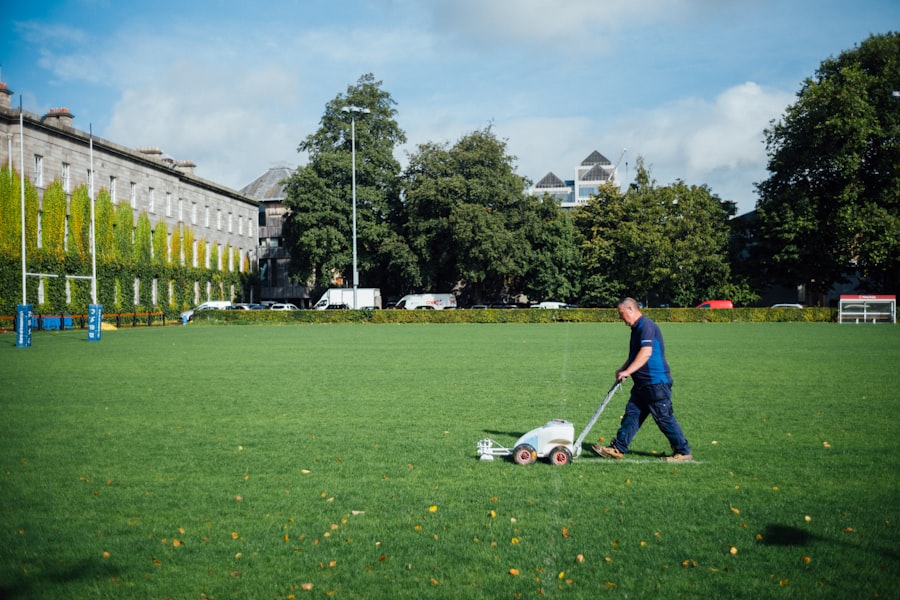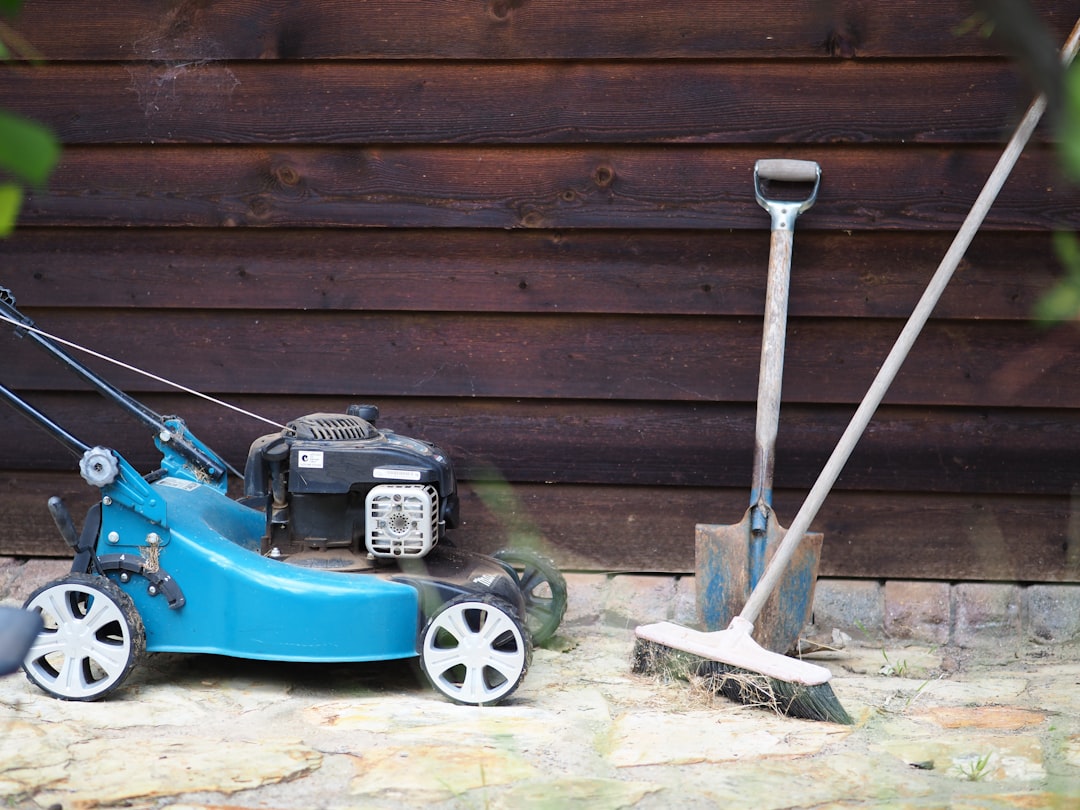The journey of lawn care technology has been a fascinating one, marked by significant advancements that have transformed how we maintain our green spaces. In the early days, lawn care was a labor-intensive task, relying heavily on manual tools such as scythes and sickles. These primitive implements required considerable physical effort and skill, making lawn maintenance a chore that was often reserved for the most dedicated gardeners.
As urbanization began to rise in the 19th century, the need for more efficient lawn care solutions became apparent. This led to the invention of the first mechanical lawn mower in 1830 by Edwin Beard Budding, which revolutionized the way grass was cut. The initial design was rudimentary, but it laid the groundwork for future innovations.
As the 20th century progressed, lawn care technology continued to evolve rapidly. The introduction of gasoline-powered mowers in the 1920s marked a significant turning point, allowing homeowners to tackle larger lawns with greater ease. The development of electric mowers in the latter half of the century further expanded options for consumers, catering to those who preferred quieter and more environmentally friendly alternatives.
The advent of robotic lawn mowers in the 21st century has taken this evolution to new heights, incorporating advanced sensors and artificial intelligence to automate the mowing process. Today, lawn care technology encompasses a wide range of tools and machines designed to enhance efficiency, reduce labor, and improve the overall health of lawns.
Key Takeaways
- Lawn care technology has evolved significantly over the years, with the introduction of grass cutter machines revolutionizing the industry.
- Grass cutter machines work by using sharp blades to efficiently and evenly cut grass at a desired height, making lawn maintenance easier and more effective.
- Using a grass cutter machine offers benefits such as saving time and effort, achieving a professional-looking lawn, and reducing the risk of injury compared to traditional lawn mowers.
- The grass cutter machine is changing the lawn care industry by increasing efficiency, reducing labor costs, and improving the overall quality of lawn maintenance.
- When choosing a grass cutter machine, consider factors such as the size of your lawn, the type of grass you have, and your budget to ensure you select the right machine for your needs.
Introducing the Grass Cutter Machine: How It Works
The grass cutter machine, commonly referred to as a lawn mower, operates on a straightforward yet effective principle: it uses a rotating blade to cut grass at a predetermined height. Most modern grass cutter machines are equipped with either rotary or reel blades. Rotary mowers feature a horizontal blade that spins at high speeds, effectively slicing through grass as it moves forward.
This design is particularly effective for cutting taller grass and is commonly found in residential and commercial settings. On the other hand, reel mowers utilize a set of vertical blades that rotate around a stationary blade, providing a clean cut that is ideal for maintaining shorter grass. The mechanics behind these machines are relatively simple but require careful engineering to ensure optimal performance.
Grass cutter machines are powered by either gasoline engines or electric motors, with each option offering distinct advantages.
The Benefits of Using a Grass Cutter Machine

Utilizing a grass cutter machine offers numerous benefits that extend beyond mere convenience. One of the most significant advantages is the time savings associated with using these machines compared to manual mowing methods. For homeowners with expansive lawns or commercial properties requiring regular maintenance, a grass cutter machine can drastically reduce the time spent on this task.
This efficiency allows individuals to allocate their time to other important activities or leisure pursuits. In addition to saving time, grass cutter machines contribute to improved lawn health. Regular mowing encourages grass growth by promoting lateral spread and preventing weeds from taking hold.
Many machines also offer mulching options that finely chop grass clippings and return them to the soil, providing essential nutrients and moisture. This practice not only enhances the overall appearance of the lawn but also fosters a healthier ecosystem by reducing the need for chemical fertilizers. Furthermore, modern grass cutter machines often come equipped with features that allow for precise cutting heights, ensuring that grass is maintained at an optimal length for health and aesthetics.
How the Grass Cutter Machine is Changing the Lawn Care Industry
| Metrics | Impact |
|---|---|
| Efficiency | Reduces time and labor required for lawn maintenance |
| Precision | Provides consistent and uniform grass cutting results |
| Cost Savings | Reduces overall maintenance costs for lawn care businesses |
| Environmental Impact | Decreases emissions and fuel consumption compared to traditional lawn mowers |
| Productivity | Allows for increased workload capacity and faster completion of tasks |
The introduction of grass cutter machines has fundamentally altered the landscape of the lawn care industry. With their ability to streamline operations and enhance productivity, these machines have become indispensable tools for both professional landscapers and homeowners alike. The shift from manual labor to mechanized mowing has allowed landscaping businesses to expand their services and take on larger projects without compromising quality or efficiency.
Moreover, advancements in technology have led to the emergence of specialized grass cutter machines designed for specific applications. For instance, commercial-grade mowers equipped with powerful engines and larger cutting decks can handle vast expanses of turf quickly and effectively. Meanwhile, residential models have become more user-friendly, featuring lightweight designs and intuitive controls that make mowing accessible to individuals of all ages and abilities.
This diversification within the market has not only increased competition but has also driven innovation, resulting in better-performing machines that cater to a wide range of consumer needs.
Tips for Choosing the Right Grass Cutter Machine for Your Needs
Selecting the appropriate grass cutter machine requires careful consideration of several factors tailored to individual needs and preferences. First and foremost, one must assess the size of the lawn. For smaller yards, a lightweight electric mower may suffice, offering ease of use and maneuverability without the burden of excessive power.
Conversely, larger properties may necessitate a more robust gasoline-powered mower or even a riding mower capable of covering vast areas efficiently. Another critical aspect to consider is the terrain of the lawn. If the property features uneven ground or obstacles such as trees and flower beds, a self-propelled mower can provide added convenience by reducing physical strain while navigating these challenges.
Additionally, evaluating cutting height options is essential; different grass types thrive at varying heights, so choosing a machine with adjustable settings can help maintain optimal growth conditions. Lastly, budget considerations play a significant role in decision-making; while investing in high-quality equipment may incur higher upfront costs, it often pays off in durability and performance over time.
The Environmental Impact of Using a Grass Cutter Machine

The environmental implications of using grass cutter machines are multifaceted and warrant careful examination. On one hand, traditional gasoline-powered mowers contribute to air pollution and greenhouse gas emissions due to their reliance on fossil fuels. According to studies conducted by environmental agencies, operating a gasoline mower for one hour can produce emissions equivalent to driving a modern car for several hours.
This reality has prompted many consumers to seek out more sustainable alternatives. Electric mowers present an eco-friendlier option by eliminating emissions during operation. Furthermore, advancements in battery technology have led to cordless electric mowers that offer comparable power without the drawbacks associated with gasoline engines.
Additionally, many modern grass cutter machines incorporate features designed to minimize noise pollution, making them more suitable for residential areas where noise regulations may apply. By choosing environmentally conscious options and employing practices such as mulching, homeowners can significantly reduce their ecological footprint while maintaining their lawns.
Maintenance and Care for Your Grass Cutter Machine
Proper maintenance is crucial for ensuring the longevity and optimal performance of any grass cutter machine. Regular upkeep not only extends the life of the equipment but also enhances its efficiency during operation. One fundamental aspect of maintenance involves keeping blades sharp; dull blades can tear grass rather than cut it cleanly, leading to an unhealthy lawn susceptible to disease.
Homeowners should regularly inspect blades for wear and sharpen or replace them as needed. In addition to blade maintenance, routine cleaning is essential for preventing debris buildup that can hinder performance. After each use, it is advisable to remove grass clippings from under the deck and clean any other components that may have accumulated dirt or debris.
Checking oil levels in gasoline-powered mowers and ensuring that electric models are free from moisture are also critical steps in maintaining equipment health. Finally, storing the machine in a dry location during off-seasons can prevent rust and other forms of deterioration.
The Future of Lawn Care: Innovations in Grass Cutter Machine Technology
As technology continues to advance at an unprecedented pace, the future of lawn care promises exciting innovations that will further enhance grass cutter machine capabilities. One notable trend is the integration of smart technology into lawn care equipment. Manufacturers are increasingly developing mowers equipped with sensors that can detect grass height and density, allowing for automatic adjustments in cutting height and speed based on real-time conditions.
Additionally, robotic lawn mowers are expected to become more sophisticated as artificial intelligence evolves. Future models may feature enhanced navigation systems that allow them to map out lawns more accurately while avoiding obstacles with greater precision. Furthermore, advancements in battery technology could lead to longer run times and faster charging capabilities for electric mowers, making them even more appealing to environmentally conscious consumers.
The incorporation of sustainable materials into mower construction is another area poised for growth. As awareness surrounding environmental issues increases, manufacturers are likely to explore eco-friendly materials that reduce waste while maintaining durability and performance standards. Overall, these innovations will not only improve user experience but also contribute positively to environmental sustainability within the lawn care industry.
If you are interested in maintaining a beautiful garden, you may want to consider investing in a grass cutter machine. These machines can help you keep your lawn looking neat and tidy with minimal effort. For more information on different types of plants that can complement your garden, check out this complete guide to cacti types, care, and maintenance.
FAQs
What is a grass cutter machine?
A grass cutter machine is a motorized tool used for cutting grass and other vegetation in outdoor areas such as lawns, parks, and fields. It is designed to efficiently and evenly cut grass to maintain a neat and tidy appearance.
How does a grass cutter machine work?
A grass cutter machine typically operates using a rotating blade or blades powered by a motor. The user pushes or guides the machine over the grass, and the blades cut the vegetation to the desired height.
What are the different types of grass cutter machines?
There are various types of grass cutter machines, including walk-behind models, ride-on mowers, and robotic mowers. Each type is designed for specific applications and varies in size, power source, and cutting width.
What are the benefits of using a grass cutter machine?
Using a grass cutter machine can save time and effort compared to manual grass cutting methods. It also provides a more uniform and professional-looking result, making it ideal for maintaining large areas of grass.
What safety precautions should be taken when using a grass cutter machine?
It is important to wear appropriate protective gear, such as eye and ear protection, when operating a grass cutter machine. Users should also be mindful of their surroundings and avoid operating the machine on steep or uneven terrain.
How should a grass cutter machine be maintained?
Regular maintenance of a grass cutter machine includes cleaning the cutting blades, checking and replacing worn parts, and ensuring that the motor or engine is properly lubricated and serviced according to the manufacturer’s recommendations.
























+ There are no comments
Add yours